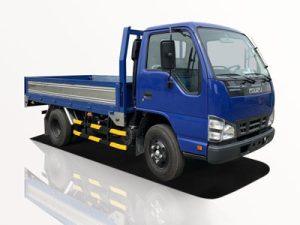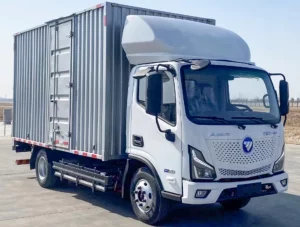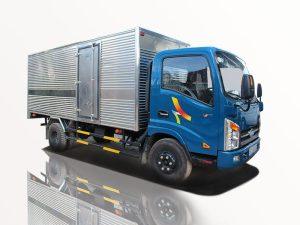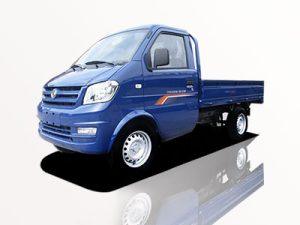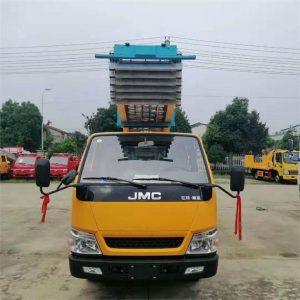Monday to Saturday - 8:00 -17:30
Ultimate Guide to Trucks with Tail Lifts: Features, Benefits, and Best Practices
Trucks with tail lifts are becoming increasingly popular among businesses involved in transportation, delivery, and logistics. These vehicles offer versatile solutions for loading and unloading cargo, making them essential tools for companies that handle heavy or bulky items. In this comprehensive guide, we will explore everything you need to know about trucks with tail lifts, including their features, benefits, practical uses, and tips for choosing the right truck for your needs.
Understanding Trucks with Tail Lifts
A truck with a tail lift, also known as a liftgate or hydraulic lift, is equipped with a mechanical device at the rear that can raise and lower heavy cargo. This innovative feature simplifies the loading and unloading process, especially in environments where loading docks are unavailable. Tail lifts come in various sizes and types, tailored to meet specific transportation needs.
Types of Tail Lifts
There are several types of tail lifts, each designed for specific applications:
- Hydraulic Tail Lifts: Utilize hydraulic mechanisms to lift and lower the platform, providing ease of use and efficiency.
- Electric Tail Lifts: Powered by an electric motor, these lifts offer quiet operation and are suitable for frequent use.
- Pneumatic Tail Lifts: Uses compressed air to operate, often preferred in industries where electricity might not be readily available.
- Mechanical Tail Lifts: Operated manually, these are more economical but require physical effort to lift and lower the platform.
Key Features of Trucks with Tail Lifts
Trucks with tail lifts are designed with several essential features that enhance their functionality:
- Load Capacity: Tail lifts come in various load capacities, ranging generally from 500 kg to 1500 kg. Knowing your requirements is key.
- Platform Size: The size of the tail lift platform varies, allowing for different sizes of cargo.
- Durability: Many tail lifts are made with robust materials that withstand the rigors of daily use.
- Safety Features: Anti-slip surfaces, safety bars, and warning lights ensure secure operation.
Benefits of Using Trucks with Tail Lifts
Investing in a truck with a tail lift can yield numerous benefits for businesses:
1. Increased Efficiency
Using a tail lift reduces the time needed to load and unload cargo. This efficiency can lead to quicker deliveries and improved customer satisfaction.
2. Enhanced Safety
Tail lifts minimize the risk of injuries commonly associated with manually lifting heavy items. Reduced physical strain on workers supports workplace safety.
3. Versatility
These trucks are capable of transporting a wide range of items, from furniture to packages, making them ideal for various industries.
4. Cost-Effectiveness
While the initial investment may be higher, the long-term savings from reduced labor costs and increased productivity can offset this expense.
5. Improved Accessibility
Tail lifts offer ease of access for deliveries in buildings without loading docks, granting flexibility in operations.
Choosing the Right Truck with Tail Lift
Selecting the appropriate truck with a tail lift is crucial for maximizing its benefits. Here are some practical tips:
1. Assess Your Load Requirements
Before making a purchase, evaluate the weight and dimensions of the items you will be transporting. This ensures you choose a truck that can handle your needs.
2. Consider the Type of Tail Lift
Choose between hydraulic, electric, pneumatic, or mechanical tail lifts based on your specific operational needs and budget.
3. Evaluate Vehicle Size
Consider the size of the truck against the space you have available for parking and maneuvering.
4. Look for Safety Features
Prioritize trucks equipped with safety features to protect your employees and cargo during operations.
5. Check for Durability
Research the quality of materials used in the truck and tail lift to ensure they can withstand your daily demands.
6. Consult with Experts
Engaging with vendors or consultants familiar with trucks and tail lifts can provide invaluable insights and recommendations.
Practical Examples of Trucks with Tail Lifts in Use
Here are some practical scenarios where trucks with tail lifts prove their worth:
1. Furniture Delivery
Furniture delivery companies often utilize trucks with tail lifts for transporting heavy furniture items, enabling safe loading and unloading straight from the truck into customers’ homes.
2. Logistics and Distribution
Logistics companies benefit from these trucks by ensuring that large pallets and packages can be loaded and unloaded efficiently at various locations without requiring docks.
3. Construction and Renovation
Construction materials such as bricks, wood, and tools can be easily loaded and unloaded using a tail lift, speeding up project timelines.
Maintenance Tips for Trucks with Tail Lifts
1. Regular Inspections
Conduct routine checks on the tail lift’s mechanics and hydraulics to identify any wear or potential issues early.
2. Keep Moving Parts Lubricated
Use appropriate lubricants on hinges and moving parts to ensure smooth operation and reduce friction-related wear.
3. Clean the Tail Lift Regularly
Removing dirt and debris will help maintain the tail lift’s components and prevent malfunction.
4. Training for Operators
Ensure that operators are trained on safe handling procedures to reduce accidents and promote efficient use.
Common Mistakes to Avoid
When utilizing trucks with tail lifts, avoid these common pitfalls:
1. Overloading the Tail Lift
Always adhere to the manufacturer’s load capacity to prevent damage and ensure safety.
2. Neglecting Maintenance
Disregarding routine inspections and maintenance can lead to costly repairs and unsafe conditions.
3. Improper Training
Failing to train personnel on the correct use of the tail lift can lead to accidents and operational inefficiencies.
FAQ Section
1. What is the average cost of a truck with a tail lift?
The cost varies based on the type, size, and brand, but you can expect to pay anywhere from $25,000 to $60,000 on average.
2. Are tail lifts difficult to operate?
Most tail lifts are user-friendly and come with easy-to-understand instructions. However, proper training is recommended.
3. Can a tail lift be added to an existing truck?
Yes, many companies offer retrofitting services to add a tail lift to an existing truck, although costs may vary.
4. How often should I maintain my tail lift?
It is advisable to perform maintenance checks every 3-6 months, but this can vary based on usage.
5. Where can I purchase trucks with tail lifts?
Trucks with tail lifts can be purchased from specialized commercial vehicle dealers, online marketplaces, and rental companies.
6. Are there weight limits for tail lifts?
Yes, each tail lift has a specified weight limit that should not be exceeded to ensure safety and functionality.



